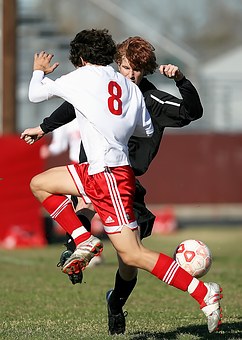It’s estimated that 30 to 45 million youths ages 6 to 18 participate in some form of athletics — and fully half of all sports-related injuries in children and teens are from overuse.
What is an Overuse Injury?
An overuse injury is damage to a tendon, ligament, bone, or muscle that’s caused by repetitive stress without adequate time for the body to heal. Shin splints, or stress fractures of the tibia or fibula, are one example of a common overuse injury.
Overuse injuries have four general stages:
- Pain in a particular area immediately after physical activity
- Pain during physical activity that doesn’t restrict performance
- Pain during physical activity that restricts performance and worsens as the activity continues
- Chronic, persistent pain, even at rest
Children and teens are at heightened risk for overuse injuries because the growing bones of a young athlete cannot handle as much stress as the mature bones of adults. Young athletes who have not yet learned proper technique — such as a young baseball player who hasn’t yet learned that proper throwing mechanics involve the entire body, not just the arm — can injure themselves.
What’s worse, young athletes may not recognize that certain symptoms are signs of overuse. They may instead choose to “train through the pain,” inadvertently worsening the injury.
How to Prevent Overuse Injuries
Here’s how you can help your young athlete prevent overuse injuries:
- Be sure they’re able to safely endure the exertion of a sport by getting a physical before participating. Ensure that any underlying medical issues are addressed.
- Encourage children to try a variety of sports and avoid specializing in one sport before late adolescence. Trying a variety of sports will move the child’s body in many different ways, helping to avoid repetitive use injuries. In addition, it will decrease the child’s risk of burnout.
- Limit participation in a sport to five days per week to ensure that young athletes have enough time to rest and recover.
- Be mindful of the child’s age as they enter sports. Puberty is a period of rapid growth during which the child’s growth plates — small sections of cartilage at the ends of their bones — are at their weakest. Injuries tend to be more common during peak growth periods and an injury to the growth plate can limit the bone’s future ability to grow properly.
Participating in sports is a wonderful way to learn values like teamwork, hard work, and practice. By being mindful of overuse injuries and how to prevent them, you can help make sure your child’s time on the team is enjoyable — and help them establish active lifestyle habits.
Overuse Injury? Contact UBMD Orthopaedics & Sports Medicine.
Unfortunately, caution won’t protect your young athlete from every injury. If an injury does occur, consult an orthopaedic specialist for proper diagnosis and treatment. For expert evaluation and treatment of sudden injuries, choose UB OrthoCare.
